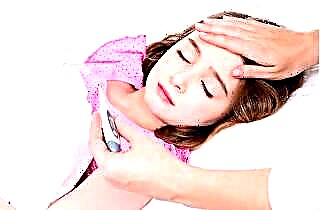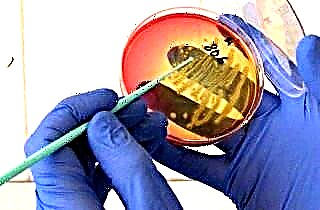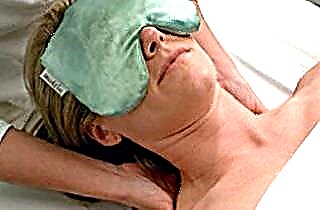Respiratory diseases in children are common. Runny nose in babies occurs very often, since their mucous membranes are much thinner and more sensitive than in adults. This means that they are more easily irritated and damaged. Immune protection in children is also formed gradually, so it is easier for pathogenic microflora to penetrate deep into the body and provoke pathological processes. The respiratory organs are most often attacked, and from the nasal cavity or mouth, inflammation can spread further.
The mechanism of development of the disease
 The causes of inflammation of the mucous membranes of the nasal sinuses are very diverse. Most often, ethmoiditis occurs in children of preschool and primary school age. This is due to the anatomical structure of the skull - the paranasal sinuses in babies are located closer to each other than in adults. And also with the fact that children, due to the not too powerful immunity so far, get sick with colds and respiratory diseases three times more often than adults: about 5-6 times a year.
The causes of inflammation of the mucous membranes of the nasal sinuses are very diverse. Most often, ethmoiditis occurs in children of preschool and primary school age. This is due to the anatomical structure of the skull - the paranasal sinuses in babies are located closer to each other than in adults. And also with the fact that children, due to the not too powerful immunity so far, get sick with colds and respiratory diseases three times more often than adults: about 5-6 times a year.
The paranasal sinuses are hollow formations in the bones of the skull lined with mucous membranes inside. There are four types of them:
- frontal - located symmetrically in the center of the forehead above the inner part of the eyebrows;
- maxillary - located under the eye sockets, on both sides of the wings of the nose, bordering the visa with the bones of the upper jaw;
- lattice labyrinth - a cellular symmetric formation, which is localized on both sides of the middle part of the bridge of the nose and borders on the inside of the orbit;
- sphenoid sinus - located in one of the bones that form the base of the skull.
Inflammatory processes in each of the sinuses have their own name: frontal sinusitis (frontal or frontal), sinusitis (maxillary), ethmoiditis (ethmoid labyrinth) and sphenoiditis (wedge-shaped). This is useful to know, since often in children, neighboring sinuses are also affected, and then, for example, frontoetmoiditis can be diagnosed.

In 90% of all cases, acute ethmoiditis occurs when pathogenic bacteria enter the respiratory tract. From the nasal cavity, the infection can easily penetrate into the paranasal sinuses and cause inflammation of the epithelial cells. The result of pathological processes is swelling and swelling of the mucous membranes. The narrow passage connecting it with the nasal cavity is partially or completely blocked, and the normal air circulation in the cells of the lattice labyrinth is disrupted.
This creates ideal conditions for the development of anaerobic bacteria and the formation of accumulations of purulent mucus, which simply has nowhere to go. The liquid presses on the inflamed mucous membranes and irritates their nervous hypersensitive endings, provoking painful sensations, sometimes quite strong.
If untreated, the disease quickly spreads to adjacent sinuses and can even create metastatic purulent foci in other organs.
Main reasons
Although mainly acute ethmoiditis develops in children as a complication after a viral respiratory illness, this is not the only cause of it. In newborns and infants, it can appear under the influence of an internal infection, against the background of already existing sepsis, when the infection enters the ethmoidal labyrinth through the bloodstream.
Ethmoiditis is most often provoked in children:
 regular colds and viral diseases - weaken the immune system, create favorable conditions for the multiplication of infection;
regular colds and viral diseases - weaken the immune system, create favorable conditions for the multiplication of infection;- chronic diseases of the sinuses (sinusitis, frontal sinusitis) - inflammation in children easily passes from one sinus to another;
- a small foreign body stuck in the nose - it may not make breathing too difficult, but at the same time disrupt the normal air circulation and interfere with the outflow of mucus;
- injuries to the bones of the nose - because of them, the nasal passages are narrowed, or the nasal septum is bent;
- some medications - if used incorrectly or uncontrolled, can lead to swelling of the nasal mucosa;
- strong allergic reactions - with them swelling occurs, and the natural passage to the trellised labyrinth is completely clogged;
- overgrowth of adenoids - squeezes the mucous membranes, disrupting the flow of oxygen and normal air circulation.
Finding out the root cause of the disease is very important and should be done as quickly as possible. Otherwise, the treatment, even correct and high-quality, will not give a result, and the disease will turn into a chronic form, which subsequently provokes serious complications.
Signs of illness
Diagnosis of ethmoiditis in young children is very difficult, since one of its main symptoms is pain that is clearly localized on one or both sides of the middle part of the bridge of the nose, sometimes radiating to the eye. Toddlers cannot describe these states. And it's good if an experienced pediatrician comes across who performs a thorough palpation of the skull, and the child calmly tolerates it and begins to cry only when pressing on the painful place.
More often it happens that at the acute stage they begin to treat ARVI or influenza, and the disease develops further and by the time of detection it is already present in a complicated form.
To prevent this from happening, it is imperative to show the child to the doctor if he has three or more of the following symptoms at the same time:
 constant gratuitous crying;
constant gratuitous crying;- the baby often shakes his head;
- difficulty breathing through one nostril;
- the child constantly breathes through the mouth;
- purulent discharge periodically appears from the nose;
- disturbed daytime or nighttime sleep;
- the child is lethargic, gets tired quickly;
- lost interest in favorite toys;
- lost appetite, the baby is losing weight;
- subfebrile body temperature is kept;
- body temperature has risen sharply;
- there is an intermittent unproductive cough.
Some of these symptoms may indicate other medical conditions. But all this will become clear during the diagnostic examination. In any case, the presence of these signs indicates obvious malfunctions in the child's body, the nature of which must be clarified as soon as possible.
Diagnostic methods
The primary examination of the child is always carried out by a pediatrician. But he cannot diagnose ethmoiditis with confidence, so ask for a consultation with an otolaryngologist if he did not offer it himself.
The doctor has the necessary tools for a more thorough examination of the baby's oral and nasal cavity, as well as knowledge about the peculiarities of the course of respiratory diseases.
The final diagnosis is made only on the basis of hardware diagnostic methods and data from clinical laboratory tests:
 blood test - will show whether there is an active inflammatory process and how intensively it proceeds;
blood test - will show whether there is an active inflammatory process and how intensively it proceeds;- bacterial sowing of mucus - will identify pathogenic microorganisms and determine their sensitivity to various types of drugs;
- endoscopic examination - will allow you to carefully examine the state of the cells of the labyrinth and check it for the presence of polyps and other neoplasms;
- X-rays - usually taken in several projections, show damaged cells of the labyrinth, as well as the presence of inflammation in other paranasal sinuses;
- computed tomogram - is done for very young children and in cases where diagnosis by other methods is difficult, the most informative type of examination.
Treatment is prescribed according to the results of the examination. If the child is in a satisfactory condition, there is no need to place him in a hospital.It is enough to comply with bed rest, some changes in the diet and strict adherence to medical prescriptions. If there is a large accumulation of pus and a strong spread of infection, hospitalization may be offered.
Treatment methods
Attention to parents! Treatment of ethmoiditis with folk remedies is ineffective, and in children it is categorically unacceptable! This will only lead to the loss of precious time, the development of complications or the transition of the disease into a chronic form. If your child's health is dear to you, consult a doctor and follow all recommendations. In this case, a really quick and complete cure of the disease.
The intensive care course is based on an integrated approach. It includes: drug therapy, rinsing the nose, strengthening the immune system and at the stage of attenuation of the disease - physiotherapy procedures. Only this approach gives quick and good results and is able to eliminate both the cause of the disease and its symptoms.
 The only exception is the treatment of allergic ethmoidal rhinitis, which develops in children prone to frequent and severe allergic reactions. In this case, it is necessary to identify and, if possible, completely eliminate the allergens, and while this happens, together with the allergist, select a good antihistamine for the child.
The only exception is the treatment of allergic ethmoidal rhinitis, which develops in children prone to frequent and severe allergic reactions. In this case, it is necessary to identify and, if possible, completely eliminate the allergens, and while this happens, together with the allergist, select a good antihistamine for the child.
Treatment of ethmoiditis of an infectious nature, most likely, will not do without antibiotics. This is the only way to completely neutralize pathogenic microorganisms provoking inflammatory processes. They are also selected individually, and the dosages must be strictly observed.
In addition, in the treatment can be used:
- antipyretic - to reduce body temperature above 38OWITH;
- anti-inflammatory - to remove pain and stop the inflammatory process;
- antiviral - if the disease is in the acute phase and is provoked by viruses;
- vasoconstrictor - to quickly relieve puffiness and restore air circulation;
- antihistamines - as prevention of allergy to antibiotics and to eliminate edema;
- mucolytic - for thinning thick mucus and its active discharge;
- immunostimulating - to activate the protective forces of organism.
Specific drugs should be prescribed by the attending physician. Independent adjustments to the course of treatment are unacceptable.
Several times a day it is necessary to rinse the child's nose with saline or special preparations: "Aquamaris", "Dolphin", etc. An oily solution of chlorophyllipt has a good antiseptic effect. You can use "Pinosol" - it contains plant extracts with antibacterial and antiseptic properties.
 It is very important to provide the child with a sparing regime of the day, to temporarily protect him from contact with other children and too active games.
It is very important to provide the child with a sparing regime of the day, to temporarily protect him from contact with other children and too active games.
Food should be complete and of high quality, with an abundance of fresh fruits and vegetables. If this is not possible, ask your doctor for a good children's multivitamin.
With properly selected treatment, no complications and adherence to all medical recommendations, significant improvement occurs as early as 3-4 days, and full recovery - in 7-10 days. A complicated form may require 2-3 weeks of therapy and even surgery, so you should not allow it to develop.

 regular colds and viral diseases - weaken the immune system, create favorable conditions for the multiplication of infection;
regular colds and viral diseases - weaken the immune system, create favorable conditions for the multiplication of infection; constant gratuitous crying;
constant gratuitous crying; blood test - will show whether there is an active inflammatory process and how intensively it proceeds;
blood test - will show whether there is an active inflammatory process and how intensively it proceeds;

